Pride clothing isn’t just a fashion statement; it’s a powerful symbol of identity, resistance, and celebration.
Stemming from the vibrant LGBTQ+ community, pride apparel has evolved from its activist roots to become a ubiquitous part of modern fashion. This article delves into the colorful world of pride clothing, tracing its history, cultural impact, and future trends.
The Evolution of Pride Fashion
Pride clothing finds its roots in the early LGBTQ+ rights movement. The initial forms of pride expression were discreet, often utilizing symbols or colors in a subtle manner to circumvent societal prejudice. A pivotal moment in pride fashion history was the Stonewall Riots of 1969, a series of spontaneous demonstrations by the LGBTQ+ community against police raids in New York City. This event marked a significant turning point in the fight for LGBTQ+ rights.
Another key milestone was the creation of the rainbow flag by Gilbert Baker in 1978. Gilbert Baker, an American artist, gay rights activist, and U.S. Army veteran, designed the original rainbow flag as a symbol of the LGBTQ+ community and pride. The flag debuted at the San Francisco Gay Freedom Day Parade in 1978, featuring eight colors, each with its own meaning, such as hot pink for sex and red for life. This flag has since been modified to the commonly seen six-striped version but remains a globally recognized emblem of LGBTQ+ pride.
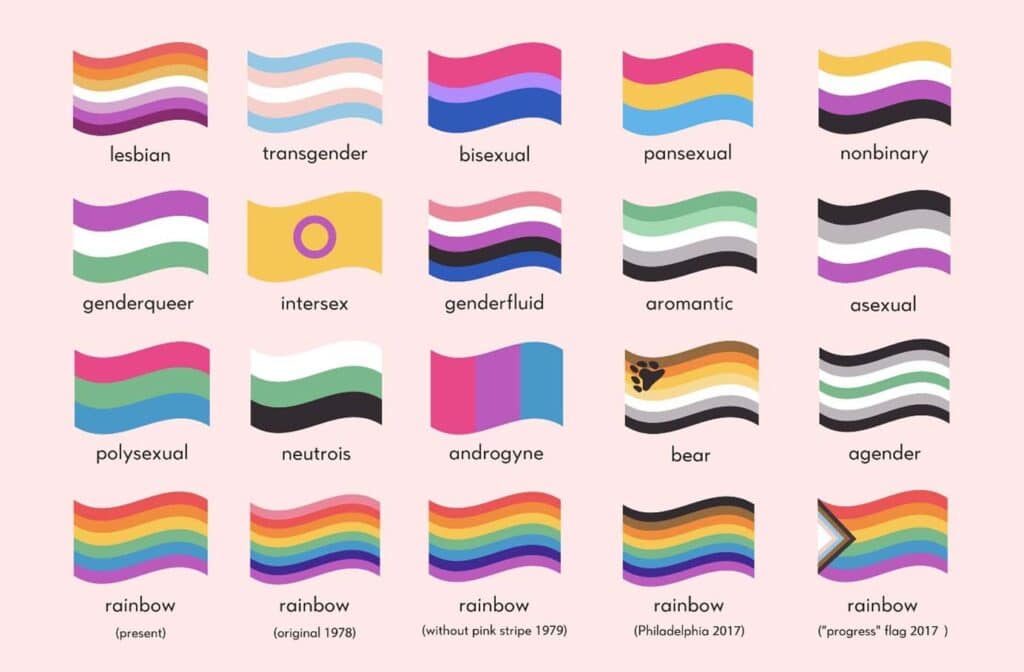
Source: Department of Mental Health, Los Angeles County
Modern Pride Clothing Trends
Today’s pride clothing is a vibrant expression of identity and solidarity. The trends in pride fashion have evolved significantly, reflecting the growing diversity and inclusivity within the LGBTQ+ community. Initially centered around the classic rainbow motif, pride clothing now embraces a wider spectrum of designs and symbols to represent various identities.
One of the most notable changes in pride fashion is the inclusion of different flag designs that represent various groups within the LGBTQ+ community. For instance, the transgender pride flag, with its light blue, pink, and white stripes, and the bisexual pride flag, which combines pink, purple, and blue, have become common in pride apparel. These designs signify a broader understanding and acceptance of the different identities within the LGBTQ+ community.
The transformation of the LGBTQ+ flag itself mirrors this trend towards inclusivity. Gilbert Baker’s original eight-color rainbow flag has undergone several adaptations. In recent years, the “Progress” Pride Flag, designed by Daniel Quasar in 2018, has gained popularity. This variation adds a chevron with black, brown, light blue, pink, and white stripes to the traditional six-color rainbow flag. The additional colors represent marginalized LGBTQ+ communities of color, along with the trans community, and those living with or lost to HIV/AIDS. This evolution of the flag symbolizes a commitment to inclusivity and progress within the LGBTQ+ rights movement.
Who Makes Trends in Pride Fashion?
Modern pride fashion’s most impactful trends include graphic T-shirts with empowering slogans, apparel featuring various pride flags for diverse LGBTQ+ identities, and stylish accessories like pins and bracelets. Pop culture has greatly influenced this evolution, with celebrities donning pride attire for visibility and TV shows incorporating LGBTQ+ themes, thus integrating pride fashion into mainstream culture. Social media influencers and high-profile collaborations between brands and LGBTQ+ advocates have propelled these styles into the spotlight, making pride clothing a powerful blend of fashion statement and social advocacy.
Check The Most Imfpactful Trends in Pride Clothing:
- Graphic T-Shirts with Empowering Slogans: For instance, T-shirts with phrases like “Love Wins” or “Proud Ally” have become iconic in pride parades and events. These shirts are not only stylish but also carry messages of support and solidarity with the LGBTQ+ community.
- Apparel with Various Pride Flags: Clothing items featuring the transgender pride flag (light blue, pink, and white) or the bisexual pride flag (pink, purple, and blue) are examples of how pride fashion has diversified to represent different identities within the LGBTQ+ community.
- Stylish Accessories: Accessories like rainbow-striped wristbands, pins with the “Progress” Pride Flag (which includes black, brown, and trans pride colors), or hats with inclusive messages are popular ways to show support in a more subtle fashion.
- Influence of Celebrities and TV Shows: Celebrities like Lady Gaga, who is known for her support of LGBTQ+ rights, often wear pride-themed clothing, significantly impacting their visibility and popularity. TV shows like “RuPaul’s Drag Race” have also brought drag culture and LGBTQ+ fashion to mainstream audiences, showcasing a variety of pride apparel.
- Social Media Influencers and Brand Collaborations: Influencers on platforms like Instagram and YouTube often showcase pride fashion, influencing trends among their followers. Brands like Nike, Converse, and Adidas have released pride-themed collections in collaboration with LGBTQ+ advocates, blending high-fashion with pride elements.

pride collection latest arrivals
- T-shirts
The Cultural Impact of Pride Clothing
Every color and symbol in pride clothing carries deep significance. The rainbow flag, for instance, represents diversity and inclusivity, with each color symbolizing different aspects like life, healing, sunlight, and nature. Other symbols, like the pink triangle, have been reclaimed from historical oppression to represent resilience and solidarity.
The latest addition to the combination of LGBTQ+ flag colors, particularly significant for pride clothing, is the “Progress” Pride Flag. Designed by Daniel Quasar in 2018, this flag revision builds upon the traditional six-color rainbow flag. It incorporates a chevron design on the hoist that features black and brown stripes to represent marginalized LGBTQ+ communities of color, along with the colors light blue, pink, and white, which are drawn from the Transgender Pride Flag.
This design aims to bring a greater focus on inclusion and progression within the LGBTQ+ movement, acknowledging the ongoing struggles of trans individuals and marginalized communities of color within the broader LGBTQ+ community. The “Progress” Pride Flag has been increasingly adopted in pride clothing as a symbol of the community’s commitment to inclusivity and the recognition of a diverse spectrum of identities.
Pride Clothing as a Form of Expression
Pride clothing is more than attire; it’s a narrative of personal journeys and community belonging. Wearing pride apparel can be an act of self-acceptance, a tribute to the struggles faced by the LGBTQ+ community, or a celebration of one’s identity. It fosters a sense of belonging and visibly asserts the community’s presence in society.
The Business of Pride Fashion
Many fashion brands and designers, from high-end to mainstream, have embraced pride clothing, releasing special collections during Pride Month and beyond. Collaborations with LGBTQ+ artists and influencers have become common, though they also raise questions about authenticity and support for the community.
- Calvin Klein’s “Pride Collection”: This collection stands out as a notable example in the pride fashion space. It features a diverse range from underwear to casual wear, all adorned with rainbow colors and symbols representing LGBTQ+ identities. Calvin Klein’s approach is distinguished by modern designs and collaborations with LGBTQ+ advocates, striking a balance between style and solidarity.
- Converse’s Pride Sneaker Line: This line is another significant contribution to pride fashion, releasing annual collections of sneakers inspired by various pride flags. Created often in collaboration with LGBTQ+ artists, these sneakers are more than just fashion statements; they symbolize support and celebration of the LGBTQ+ community. Their vibrant designs have gained popularity both within the LGBTQ+ community and beyond.
Brands often use targeted marketing strategies to appeal to both LGBTQ+ individuals and allies. While these campaigns can significantly boost visibility and sales, they sometimes draw criticism for commercializing pride without adequately supporting the community.
Criticism and Commercialization Concerns
A common form of criticism is centered around the concept of “rainbow capitalism” or “pinkwashing.” This criticism arises when companies are perceived to be capitalizing on LGBTQ+ symbolism and pride celebrations, particularly during Pride Month, without demonstrating a genuine, year-round commitment to LGBTQ+ rights and issues. Here are a couple of examples:
- Limited Financial Support for LGBTQ+ Causes: Some brands face criticism for launching pride-themed collections and marketing campaigns while contributing only a minimal portion of the proceeds to LGBTQ+ organizations, or sometimes not contributing at all. Critics view this as profiting from the symbolism of LGBTQ+ pride without offering substantial support to the community.
- Inconsistent Corporate Policies: Criticism also arises when companies market pride-themed products or campaigns but fail to maintain consistent policies that support LGBTQ+ employees or have histories of supporting anti-LGBTQ+ legislation or politicians. This discrepancy between public marketing and internal policies often leads to allegations of hypocrisy and performative allyship.
The commercialization of pride clothing is a double-edged sword. While it helps in mainstream acceptance, there are concerns about companies profiting from pride without genuinely supporting LGBTQ+ rights. Balancing commercial interests with true community support remains a complex issue.
Brands facing backlash for perceived insincerity in their pride campaigns often respond by revising their strategies. This can include increasing donations to LGBTQ+ organizations, ensuring year-round commitment to LGBTQ+ issues, and engaging more authentically with the community.
The Future of Pride Fashion
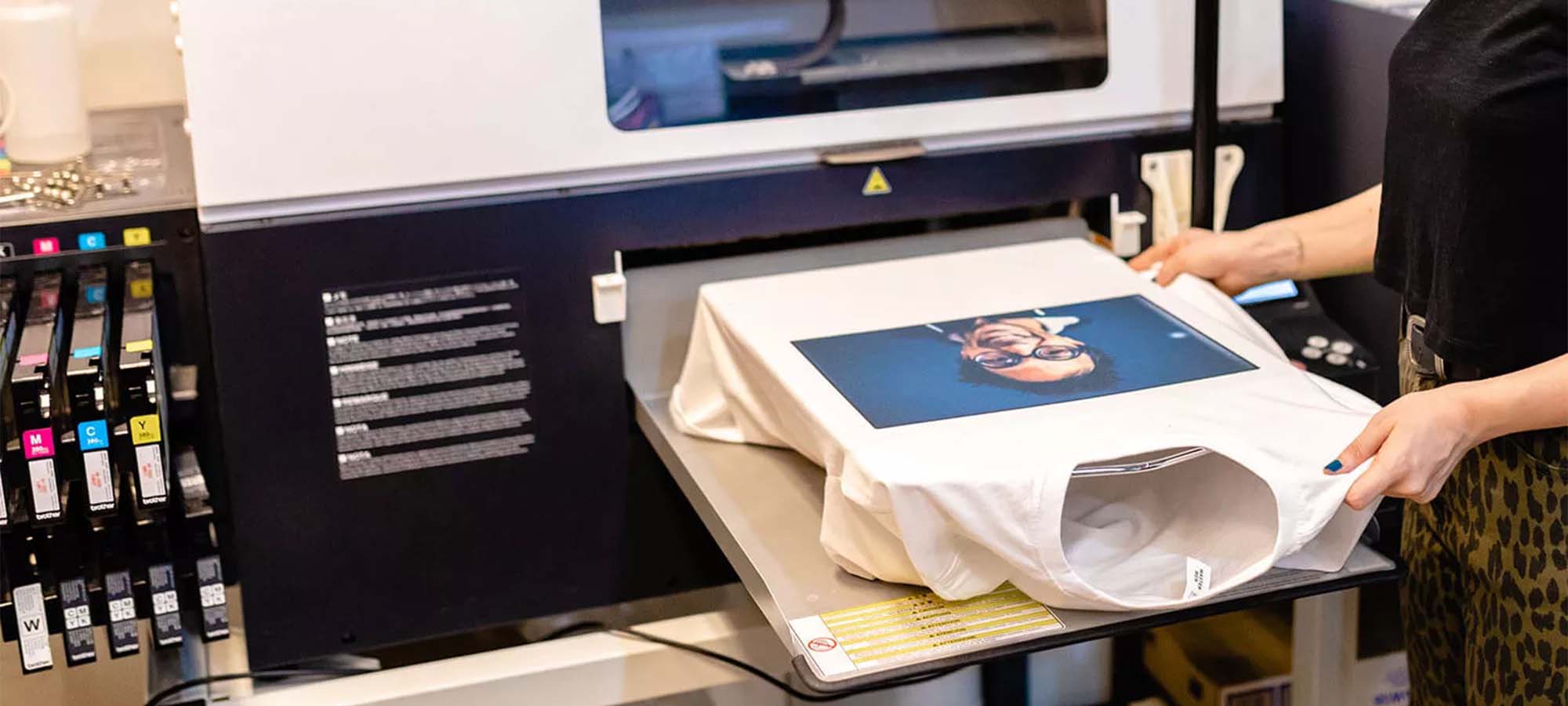
Picture: DTG Printer
In the evolving landscape of pride fashion, forward-thinking and sustainable practices are increasingly becoming the norm. Leading this trend, “The We Like We Love Apparel Store” exemplifies innovation with its range of gender-neutral and adaptive clothing, catering to the diverse LGBTQ+ community. Their commitment to environmental responsibility is highlighted through the use of recycled materials and ethical manufacturing, aligning with the growing demand for sustainable fashion.
Embracing the latest technological advancements, ‘The We Like We Love Apparel Store’ utilizes Direct to Garment (DTG) printing. They also employ the Print-on-demand (POD) method for producing pride apparel. DTG technology enables high-quality, detailed printing directly onto clothing. This capability allows the store to offer a wide range of intricate and colorful designs that celebrate LGBTQ+ diversity. Additionally, the method supports on-demand production, reducing waste and aligning with sustainable practices.
The POD method allows the store to produce items on order, reducing overproduction and inventory. This sustainable approach lets the store adapt quickly to changing fashion trends and preferences. It offers a dynamic, responsive collection that aligns with environmental goals. DTG and POD methods highlight ‘The We Like We Love Apparel Store’s commitment to innovation and eco-friendliness. These practices showcase their focus on customer-centric and environmentally responsible pride fashion.
Choosing Pride Clothing
Tips for Selecting Pride Apparel
When choosing pride clothing, consider quality, comfort, and style. Look for items that resonate with your identity and expression. It’s also important to consider the durability and practicality of the clothing.
Supporting Authentic LGBTQ+ Brands
One way to ensure your purchase makes a positive impact is by supporting brands that are authentically engaged with the LGBTQ+ community. These are often smaller, LGBTQ+-owned businesses or brands with a track record of year-round advocacy and support.
Conclusion: The Enduring Significance of Pride Clothing
Pride clothing is more than just a fashion choice; it symbolises identity, resistance, and celebration. Its evolution from rainbow motifs to inclusive designs mirrors the LGBTQ+ community’s growth and diversity. As pride fashion continues to evolve, it remains a vital tool for advocacy, awareness, and self-expression.
FAQ
The LGBTQ+ Pride Flag (traditional, original) holds a deep significance in its color scheme. Each stripe represents a different aspect of life and community. Red symbolizes life, Orange represents healing, Yellow signifies sunlight, Green stands for nature, Blue denotes serenity, and Purple symbolizes spirit. These colors symbolize the LGBTQ+ community’s diversity and unity, making the rainbow flag a proud symbol of advocacy.
Advancements in technology have made sustainable and efficient production of pride clothing possible. Print-on-demand (POD) and Direct to Garment (DTG) Printing reduce waste by producing clothing only upon order. DTG technology creates vibrant prints showcasing intricate designs and colors typical of pride apparel. These innovations facilitate customization and personalization of pride clothing. Consumers can personalize their apparel online, choosing designs, colors, and messages that reflect their identities and preferences.
The global fashion industry, accounting for 10% of carbon emissions and 20% of wastewater, significantly impacts the environment. In this context, consumer trends lean towards sustainability, with a 2020 McKinsey report showing over 60% value sustainable practices.

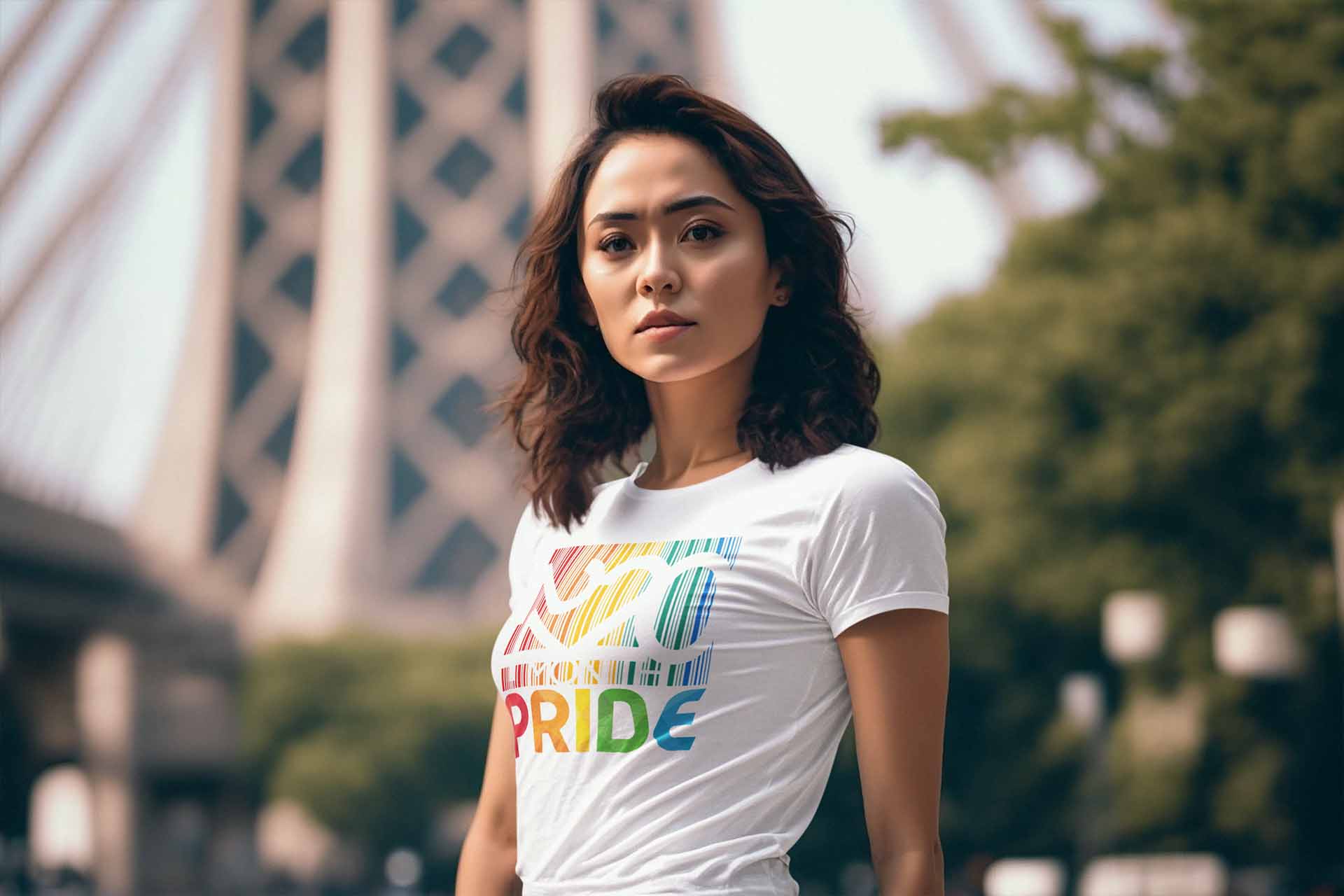
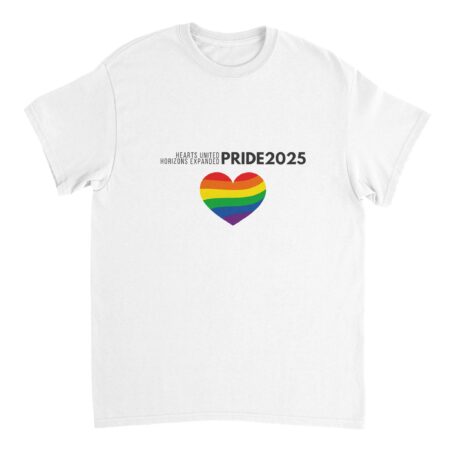
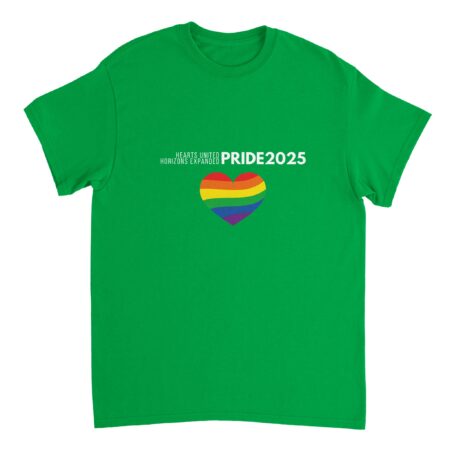
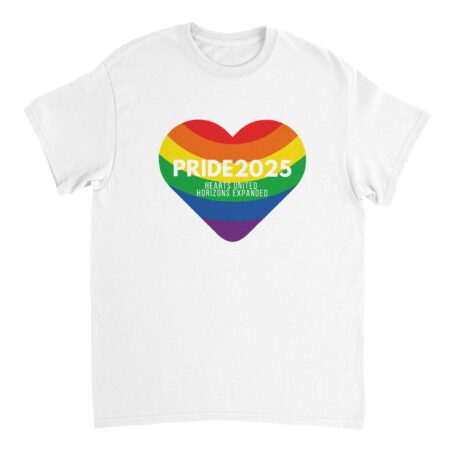
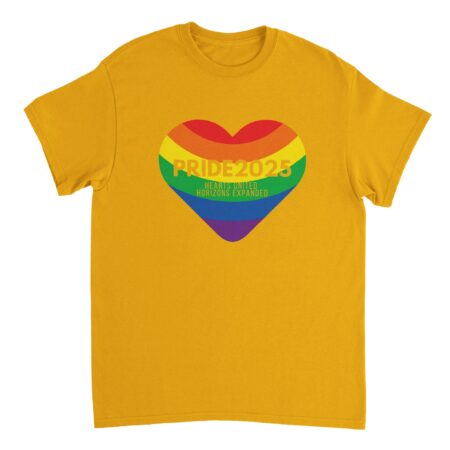
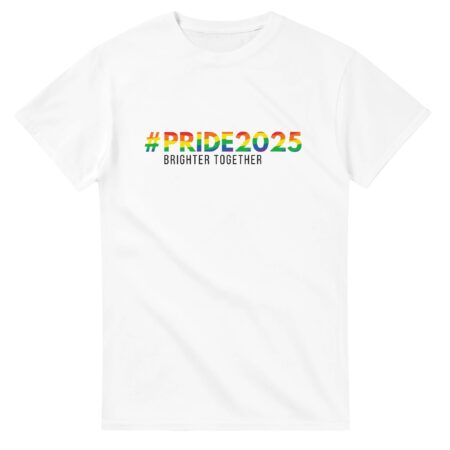
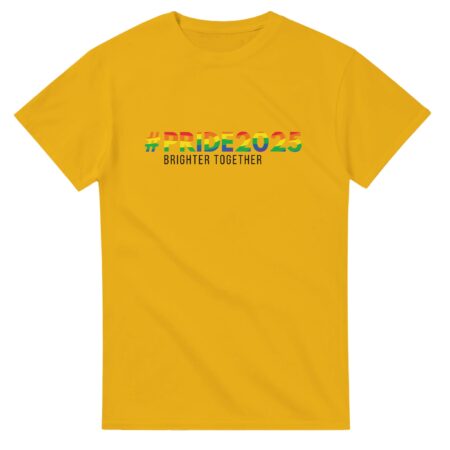
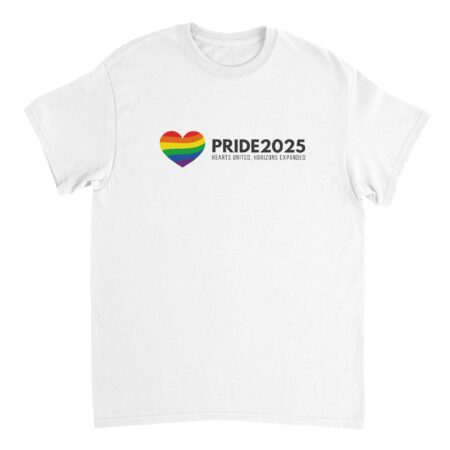
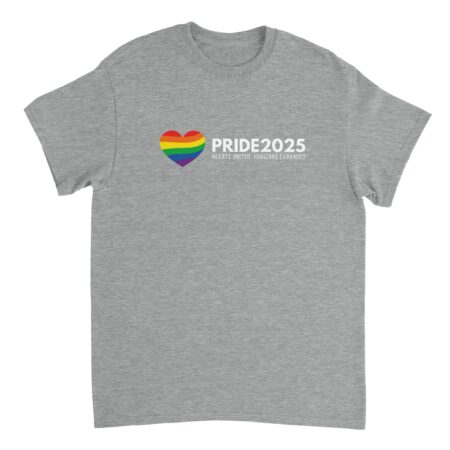
Leave a Comment
Your email address will not be published. Required fields are marked *